The purpose of this blog is to provide a documented mechanism for the process to baseline a start-up schedule in Primavera, as well as a guide on how to update the baseline for the new internal scope to an existing project in Primavera that has already been baselined, or adding new external scope that results in the addition of a second baseline. Such an example can be new scope added to the existing schedule as a result of an internal Management of Change (MOC), Execution Variance (EXV), Missed in Bid (MIB), or other external change requested and approved by the client. Most importantly, this documentation provides guidance on how to create a new baseline for the new activities and scope to the existing schedule without changing the original plan.
It is imperative to carefully review the project schedule with all stakeholders and ensure that it meets scheduling and planning best practices and that all errors and inconsistencies have been resolved prior to setting a baseline. Per solid Project Management Practices, you should only have two open ends in a schedule; one missing predecessor for the first task (often a contract start milestone) and one missing successor (often a project close-out or completion milestone) for the final task. Look for any references to out-of-sequence activities or invalid relationships and ensure integrity in the logic and resources.
It is recommended that you create a copy as a .xer backup to the Primavera file prior to setting the baseline.
First, select the Project tab – Maintain Baselines:

Select “Add”, when this window appears:
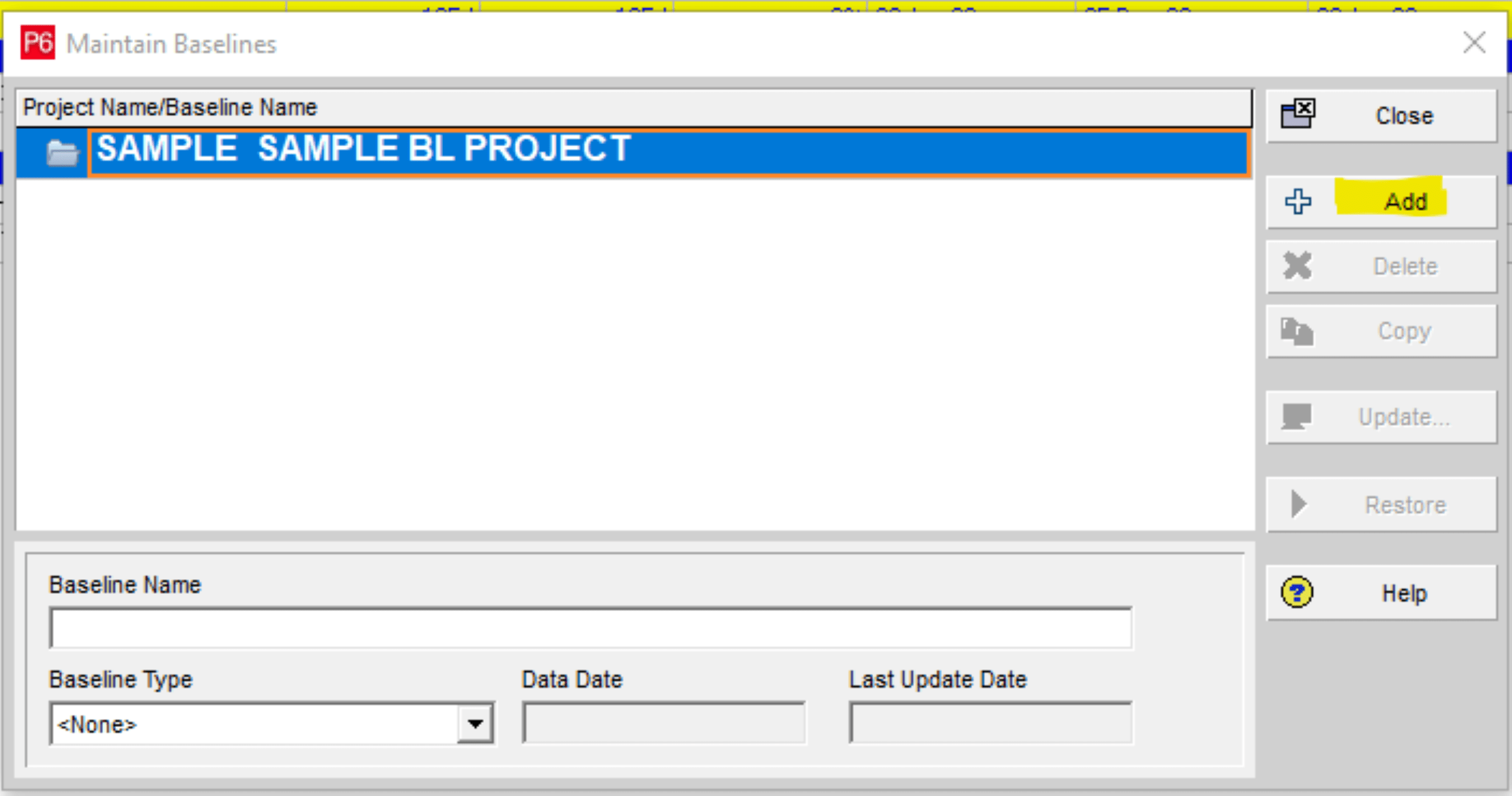
Select “Save a copy of the current project as a new baseline”:

You now have the option to rename the baseline based on the kind of baseline you are setting. Since this is the initial baseline following stakeholder reviews and approvals, select “Initial Planning Baseline” for the Baseline Type:

Close the window out. In the activities view, select the Project tab and select Assign Baselines:

The next screen should appear similar to this:

Select your baseline that you just created in the two places indicated below and select “OK”:

The original project baseline for the start-up schedule has been set successfully.
In the event of the requirement for the addition of scope and activities to the Primavera project schedule, you will want to go to the Primavera project schedule and add the new tasks. Although a cut and paste will work with an existing task, you may want to right-click on the task where you want to add the new tasks before in the sequence of events. The new tasks can also be moved in the sequence where you want them, and you can populate the relevant code fields where necessary.
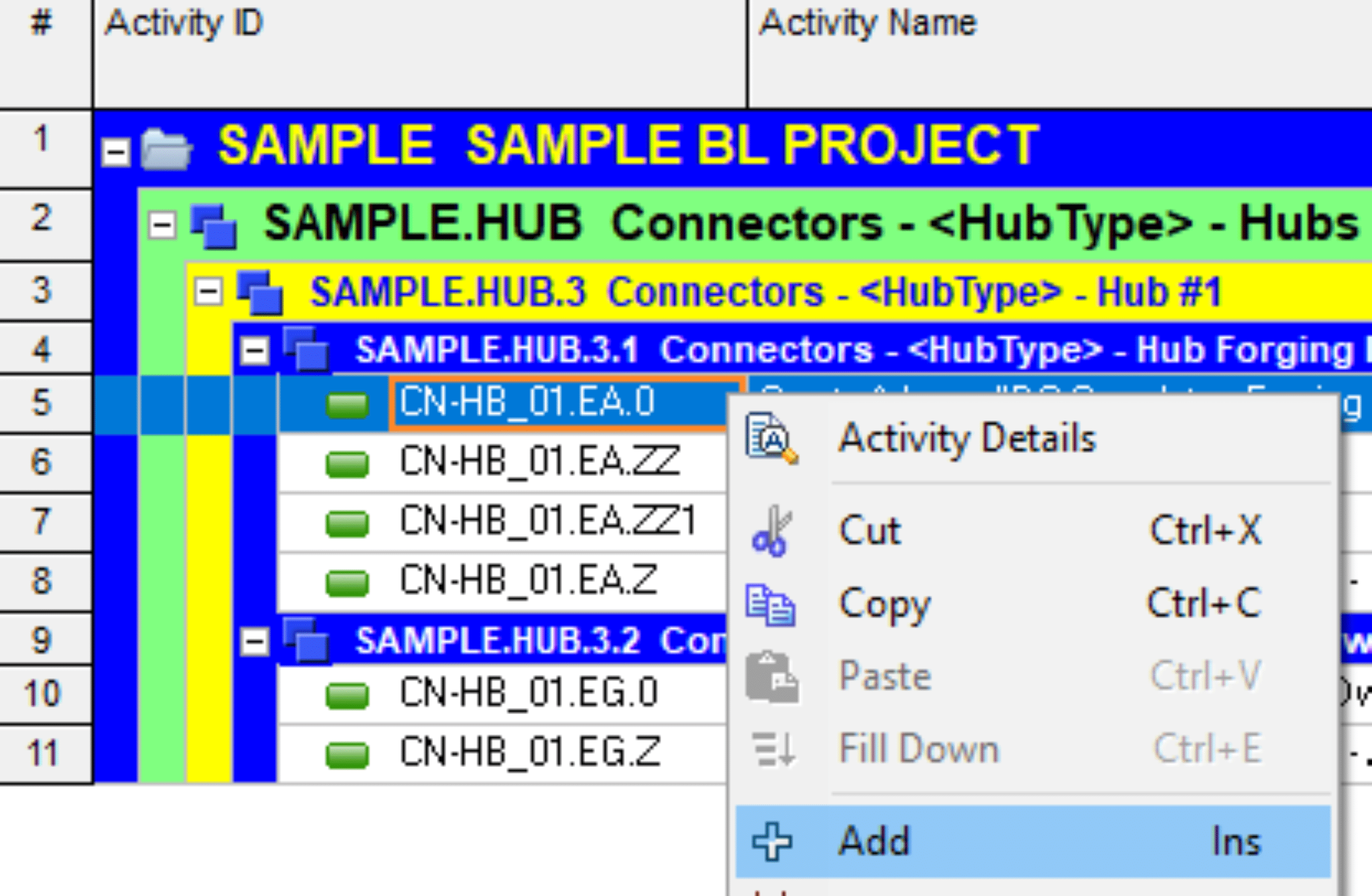
You will notice that there are no baseline dates or baseline project durations on the new tasks that you just added. The red bars in the Gantt chart to the right represent the critical activities in the project sequence, and the thin, yellow bars represent the original baseline that you set for the schedule earlier. Notice that the two new tasks do not have the baseline bars in the Gantt and that the original current status of the project (red bars) has moved to the right in the Gantt to show the slide in the activities from the original baseline due to the logic in the new driving activities.

In the activities view, select the Project tab and select Maintain Baselines:

You will be able to see your original baseline on the project. Select “Update”:
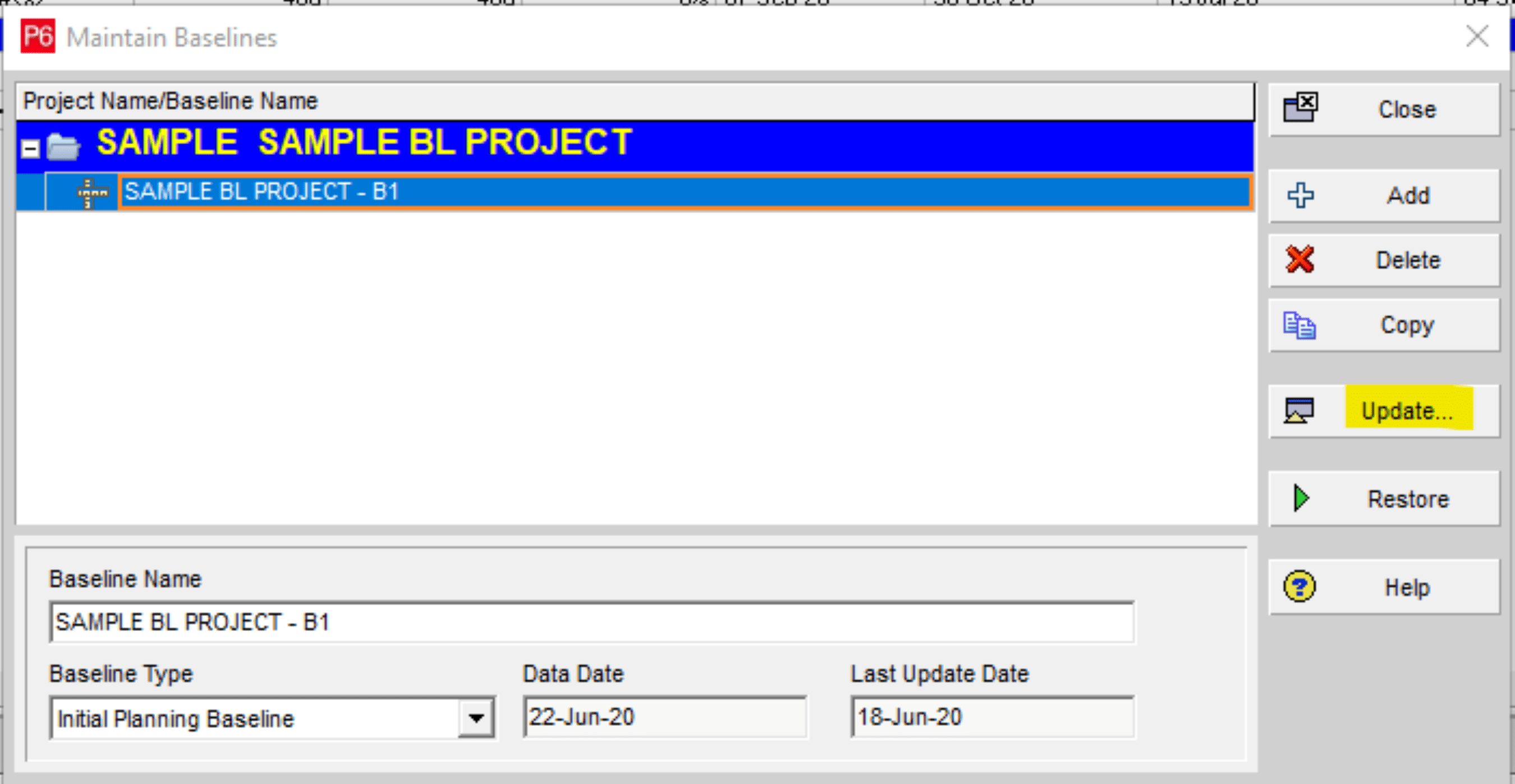
Ensure that your selections look like the snapshot below. “Add new activities and activity data” and “Update existing activities already in the baseline” should be checked. Select the Update button:
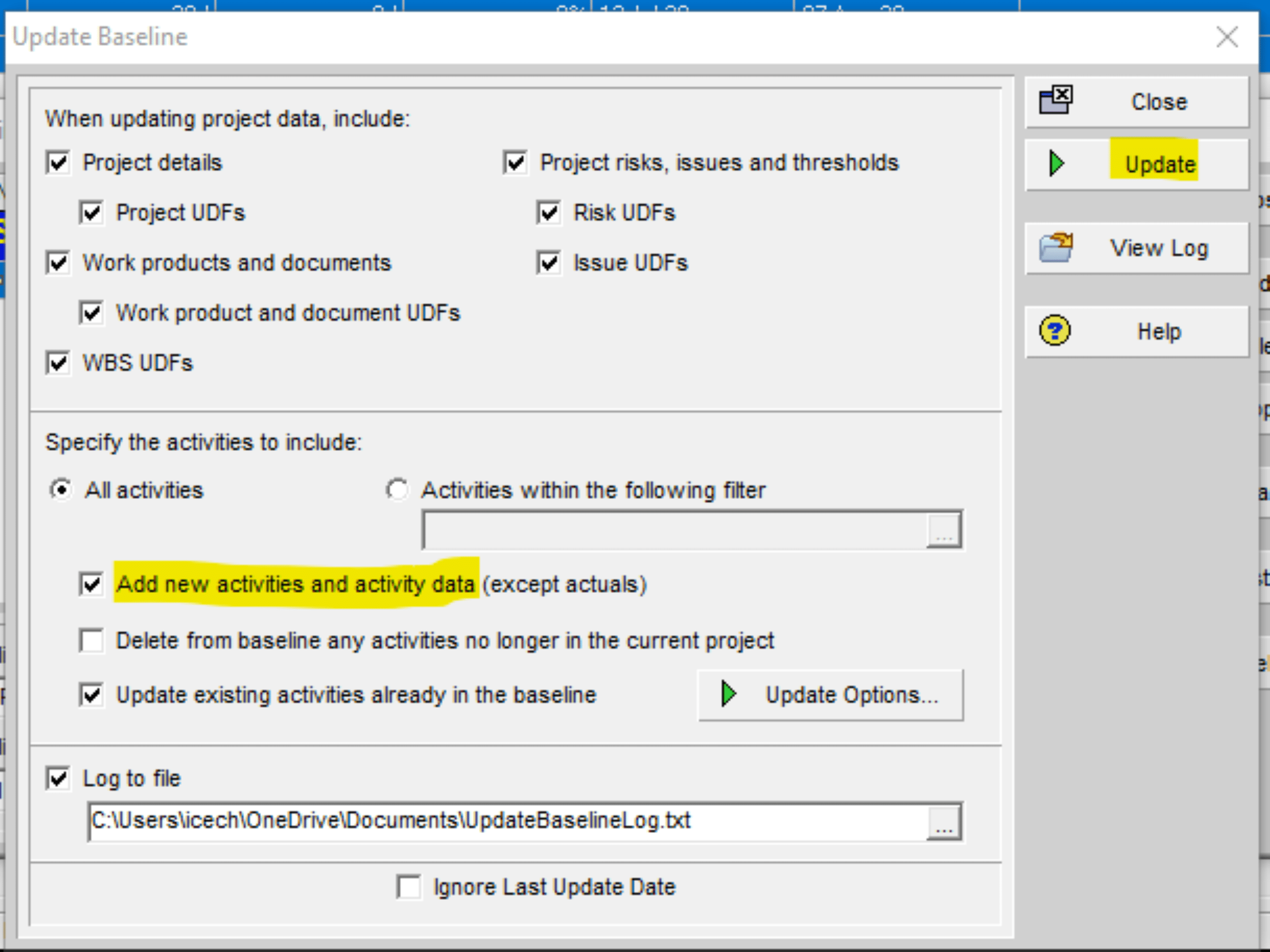
You will receive confirmation that the update is successful:
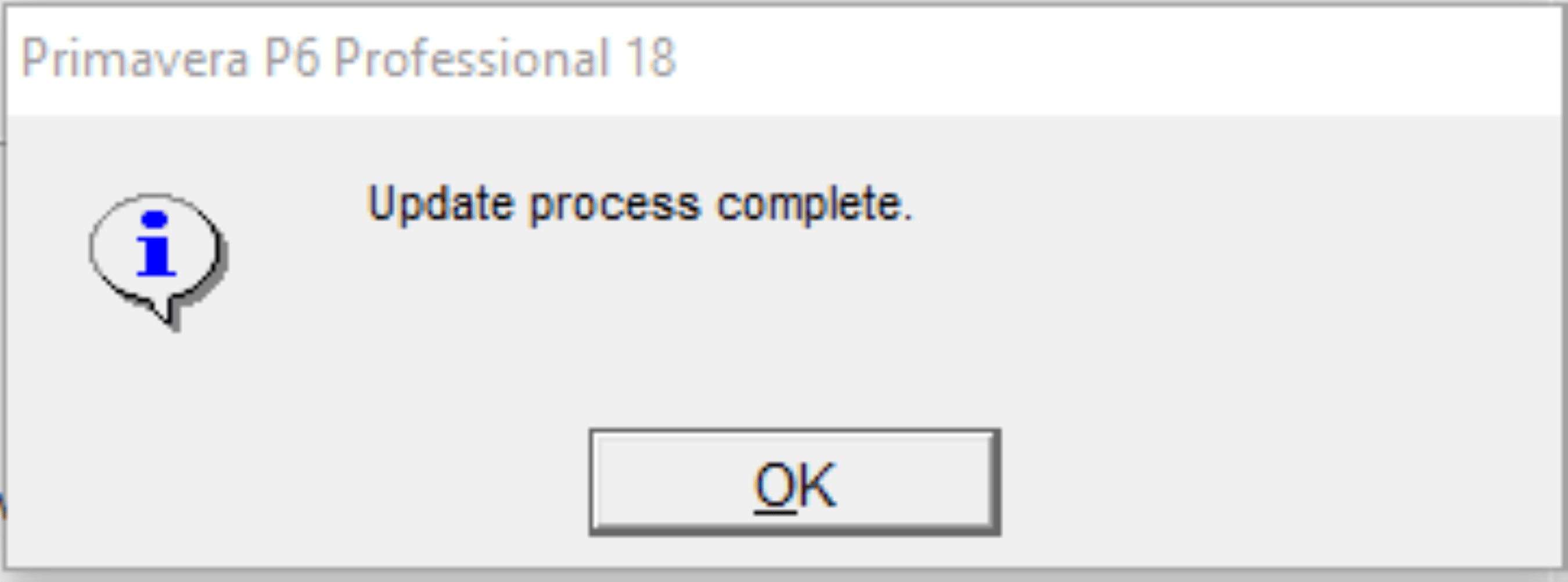
The two new tasks are now part of the baseline and you can still see the original baseline and forecast activities of the original tasks that have slipped due to the addition of the new scope in the project schedule:

When execution requires it, sometimes it is necessary to add a new baseline to the existing Primavera project schedule. This is not to be confused with a re-baseline of the original plan and schedule, per the client; it is adding an additional baseline to the schedule. This practice has been used in some circumstances, and it is usually reserved for external scope.
Once you add the new activity or activities and connect all logic ties and populate the necessary Primavera fields, you will notice that the new activity lacks the yellow baseline bar just as before:

In the activities view, select the Project tab and select Maintain Baselines:

You will be able to see your original baseline on the project. This time, select Add:
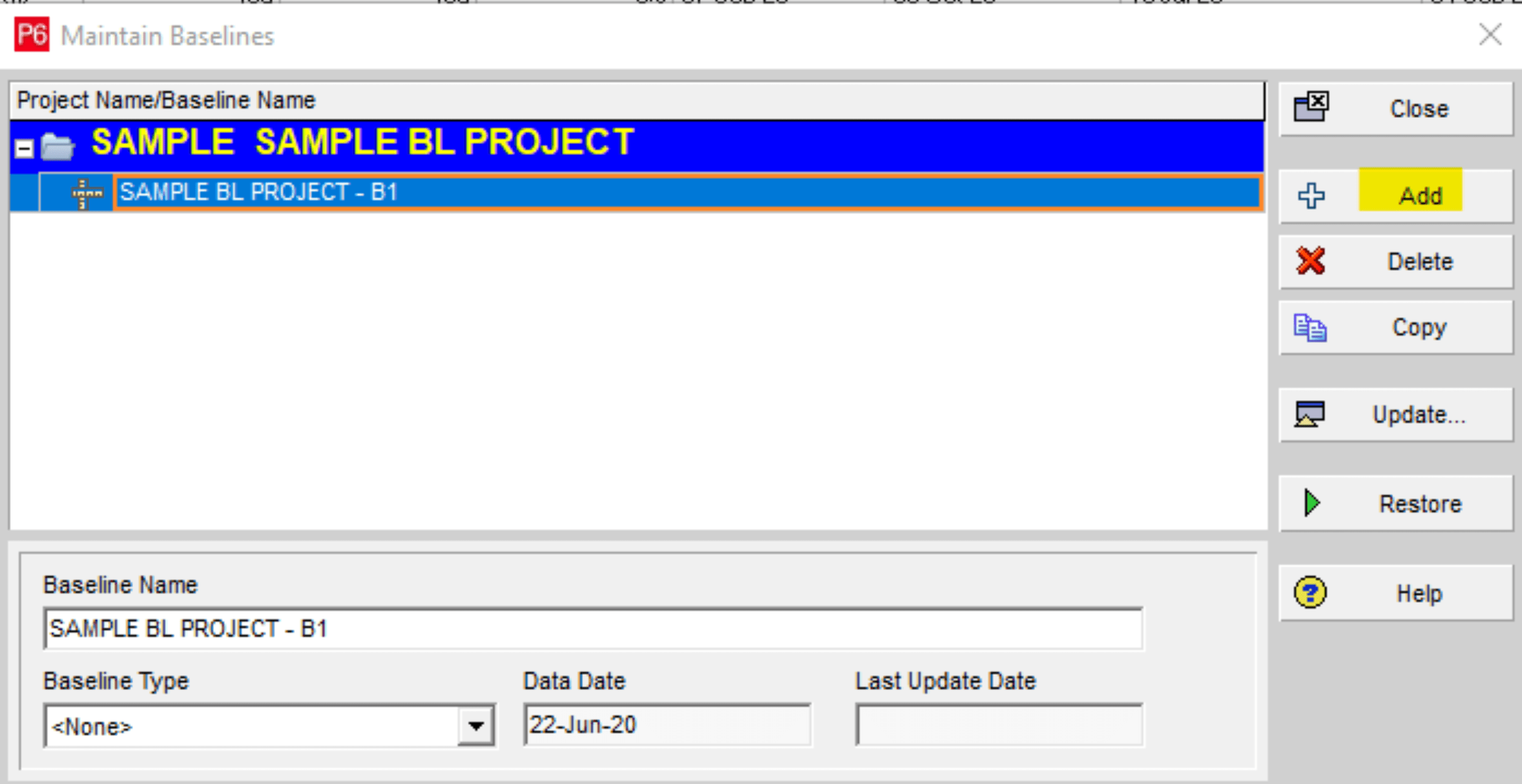
Select “Save a copy of the current project as a new baseline” and then “OK”:
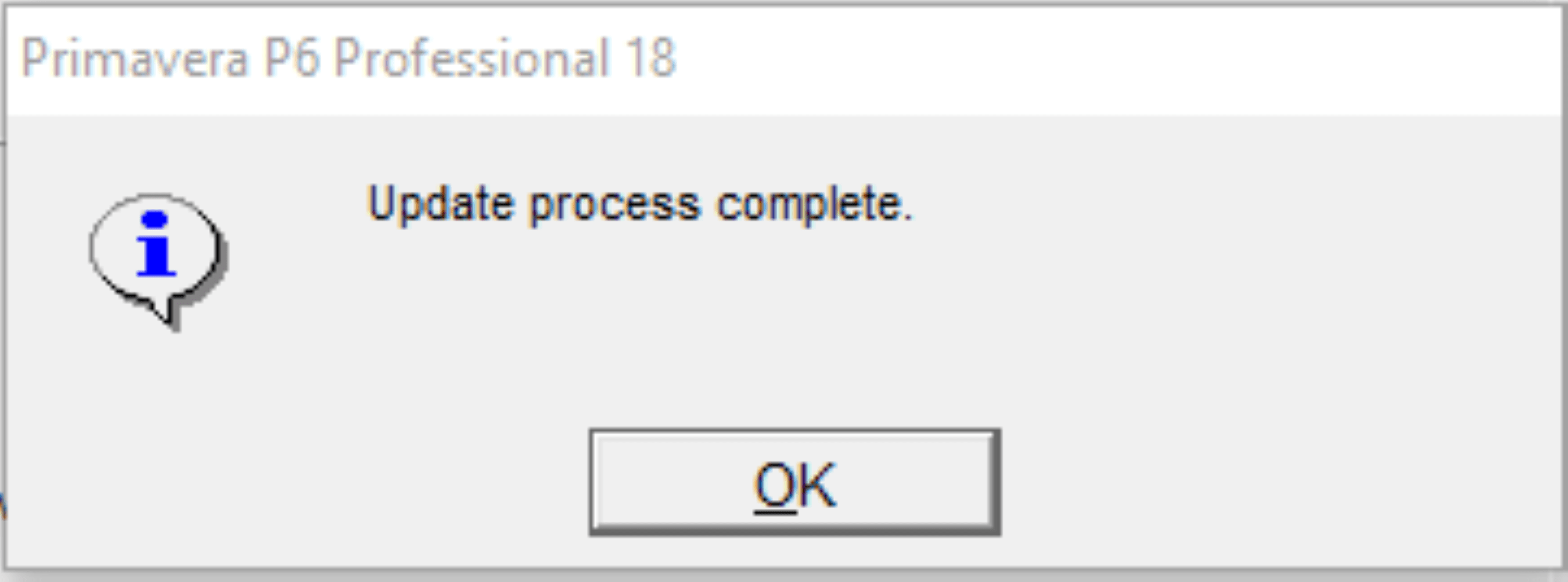
You now have the option to rename the new baseline. You can include the description of or the date of this new baseline in the title and select Update:
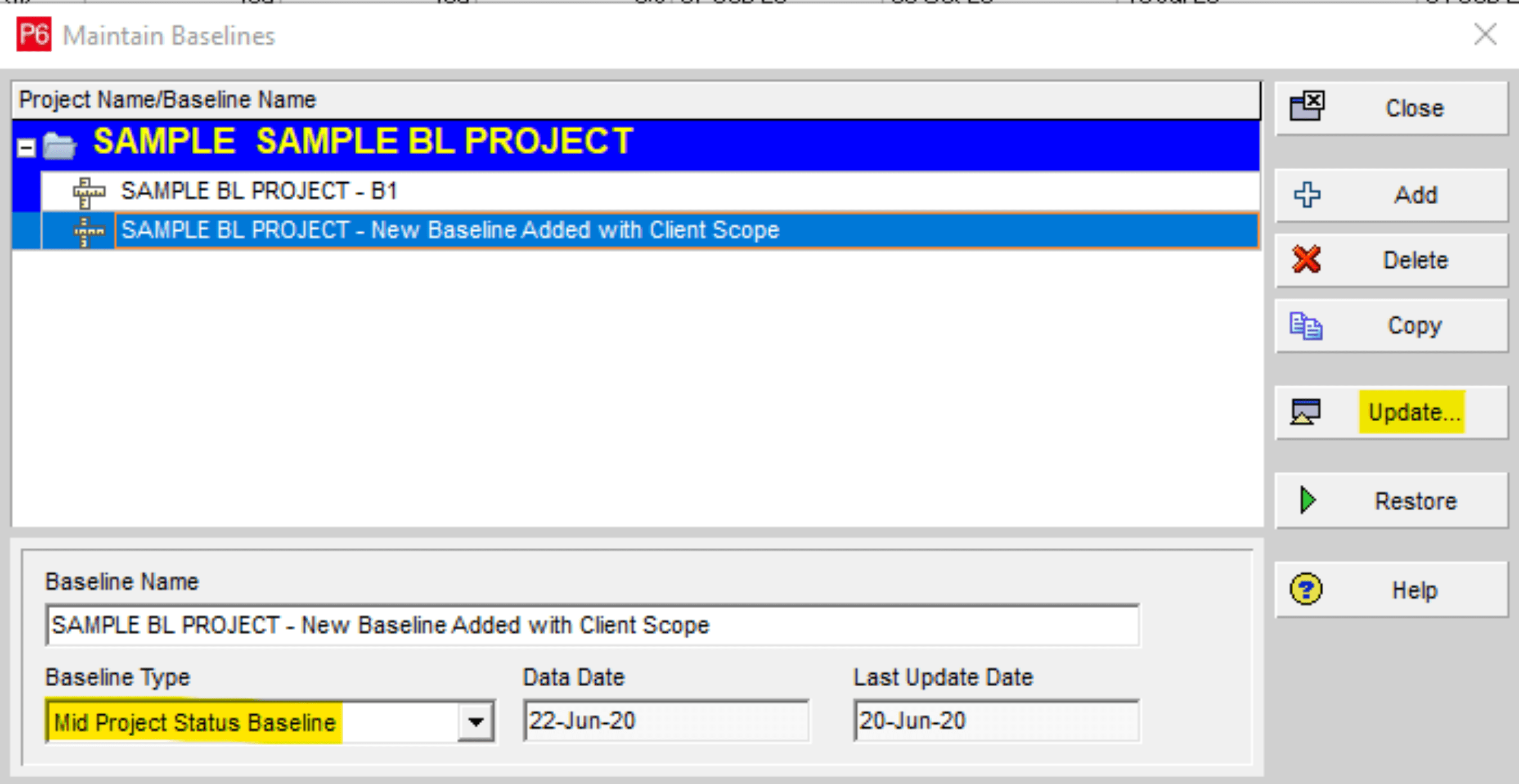
Ensure that your selections look like the snapshot below. “Add new activities and activity data” and “Update existing activities already in the baseline” should be checked. Select the Update button:
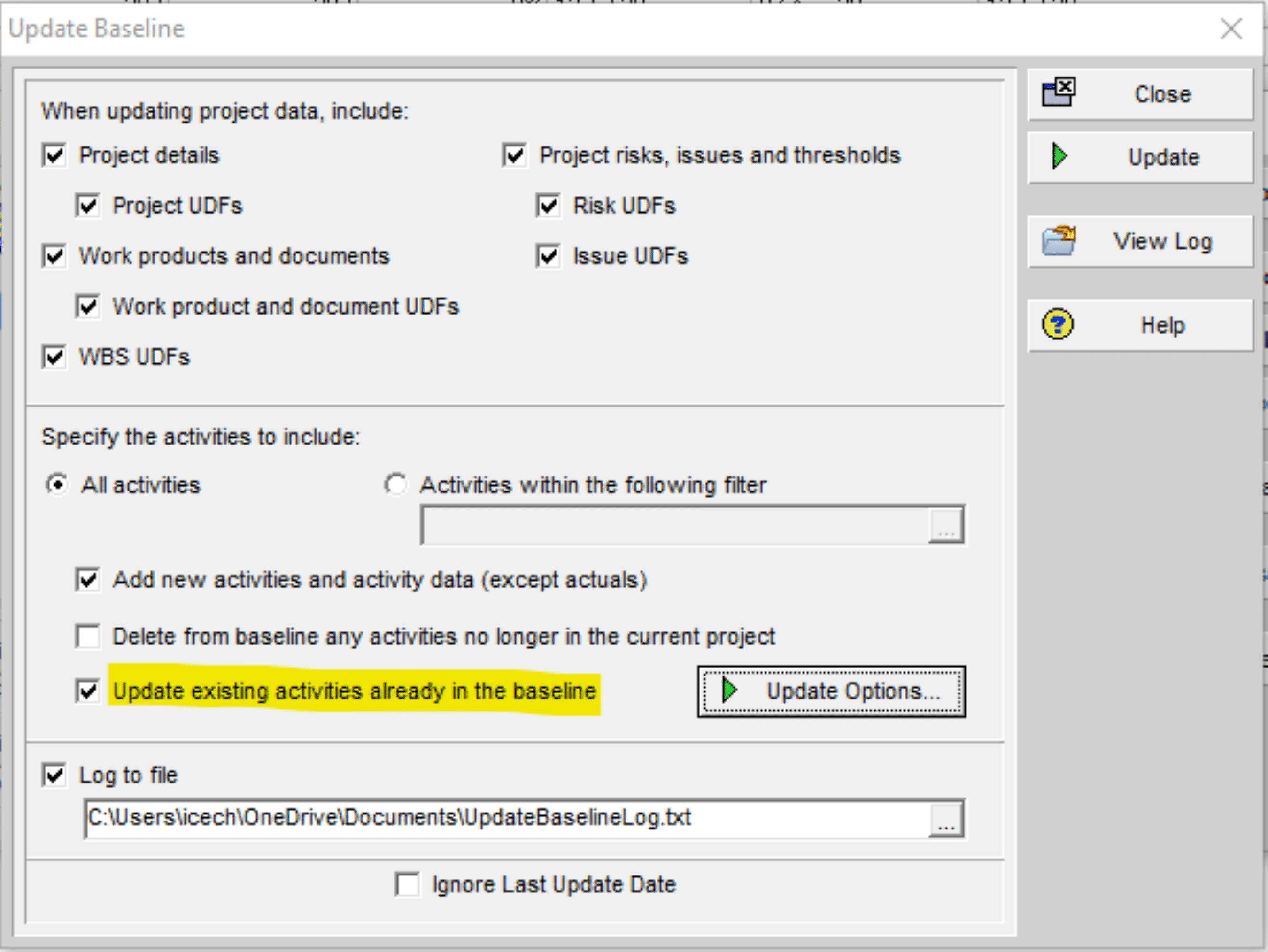
You will receive confirmation that the update is successful:

In the activities view, select the Project tab and select Assign Baselines:

Select the new baseline that you just created under “Project Baseline” and select “OK”:
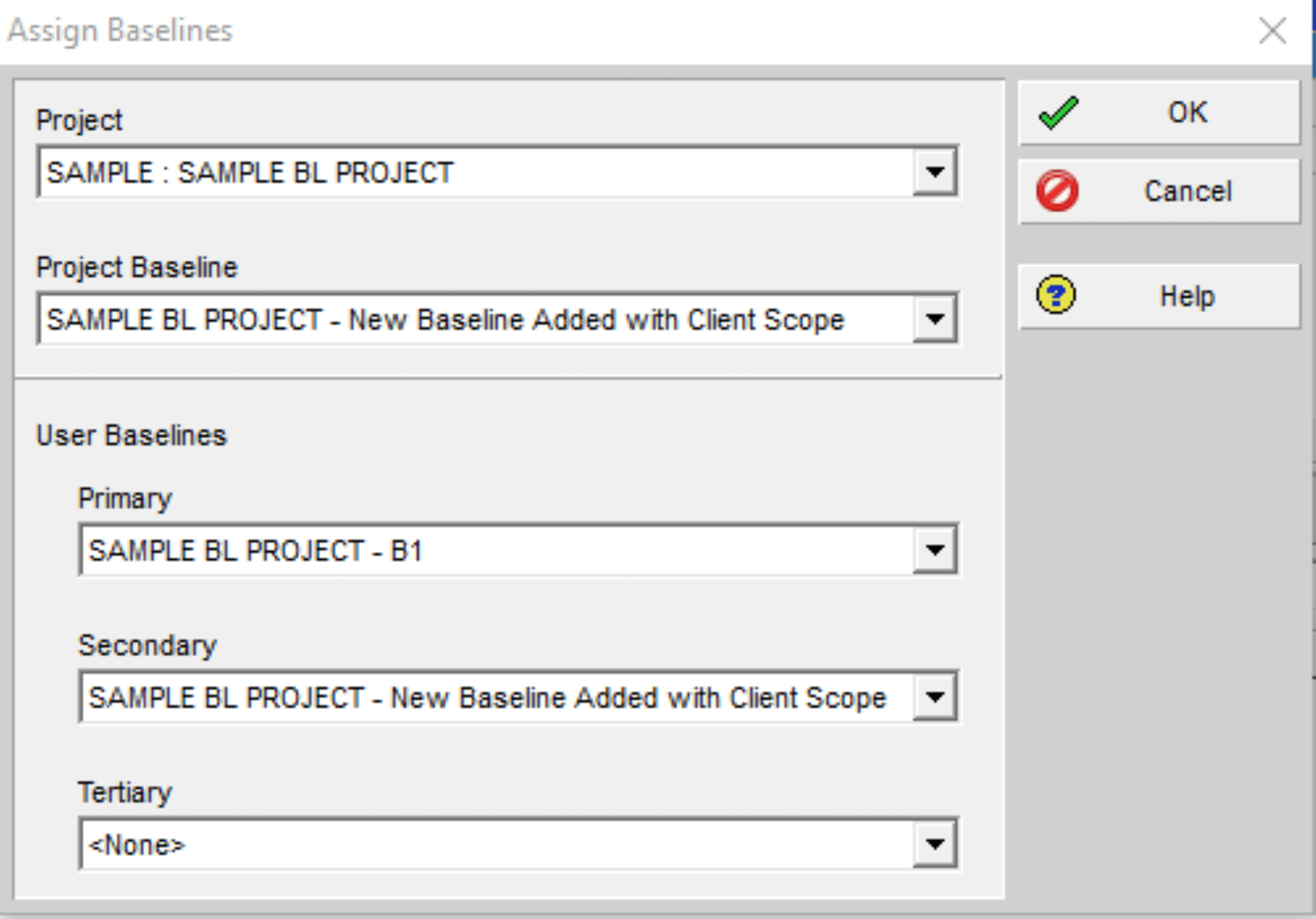
The new project baseline has been set successfully, and you still have the traceability of your original plan.






